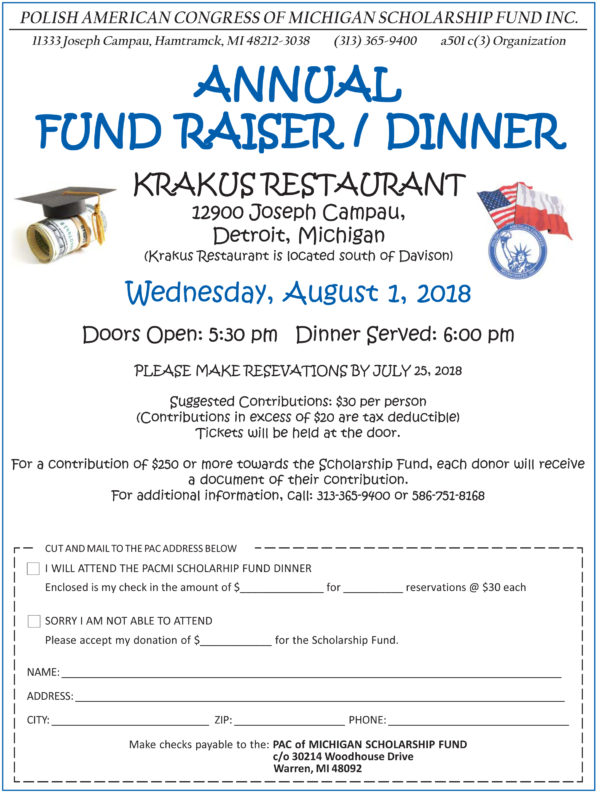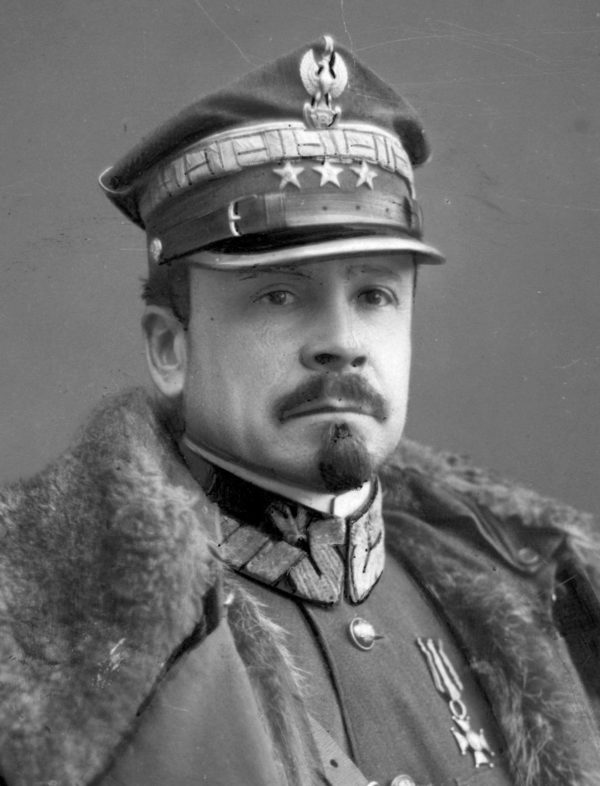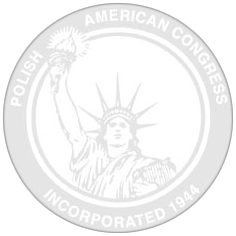Dear Member and Friend of the Polish American Congress,
It is that time of the year for the Polish American annual Scholarship appeal “Invest in the Future and Make a Difference”. With the cost of college education increasing each year, more and more students are applying for scholarships. The Dinner Fundraiser that is held each year at Krakus Restaurant is not sufficient to award each student at least a one thousand dollar scholarship.
We are requesting contributions from you or your organization or from your family estates that can also be donated “in memory of” or “in honor of” an individual. Donations of any amount will be greatly appreciated. Those who give $100.00 or more will have their name placed on a Donor Board that will on display at the PAC office in Hamtramck for the entire year.
We have also enclosed our Scholarship Dinner flyer which is our major fundraiser. It will be held at Krakus Restaurant on Wednesday, August 1, 2018. This is a time to have a good meal, socialize, meet and talk with the scholarship recipients and donate towards a worthy cause.
Today, higher education is very expensive and for those young adults who continue their education to a higher degree, it is difficult for them to attend and at the same time, hold down a job to pay their expenses. Your generous investment, whether large or small, is greatly appreciated and will make a difference for our youth who attend college and who are the future leaders of Polonia.
Polish American Congress of Michigan Scholarship Fund has given scholarships since 1972. We hope that we can continue through your generosity. Checks are to be made payable to: PAC of Michigan Scholarship Fund, Inc. and send to: PAC of Michigan Scholarship Fund, Inc. c/o 30214 Woodhouse Dr., Warren, MI 48092. Deadline for this appeal is July 25, 2018.
With deep gratitude,
Wallace M. Ozog, President
PAC of Michigan Scholarship Fund, Inc.
Ann Bankowski, Chairman
PAC of Michigan Board


 The Polish American Congress (PAC) is a U.S. umbrella organization of Polish-Americans and Polish-American organizations. Its membership is composed of fraternal, educational, veterans, religious, cultural, social, business, and political organizations, as well as individuals.
The Polish American Congress (PAC) is a U.S. umbrella organization of Polish-Americans and Polish-American organizations. Its membership is composed of fraternal, educational, veterans, religious, cultural, social, business, and political organizations, as well as individuals.